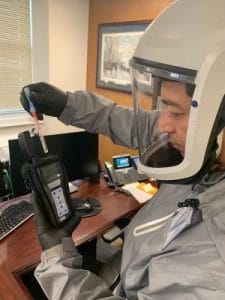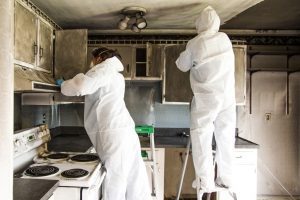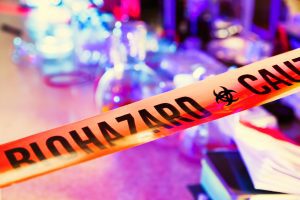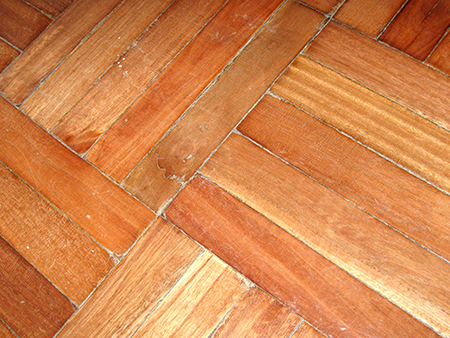How to Know if Your New House Was a Meth House
Buying a new home is a major expense. Homebuyers should be sure they have stumbled upon their dream house—not a meth house.
How to Know if Your New House Was a Meth House
Caveat Emptor means “buyer beware,” and only 27 states require that meth production be disclosed. However, that doesn’t mean that such will be revealed by all sellers. And for some former landlords, they may not even know what their former tenants were doing. Therefore, here are ways to recognize if your home is a former meth house.
Foul Odors
Musty smells may be expected in old homes, sometimes lending to the rustic charm of the antiquated structureStructure refers to the framework or components of a buildin... More. But when the lingering odors mimic the foul scents of rotten eggs, vinegar, and ammonia, be suspicious. These smells should prompt an interested homebuyer to ask tough questions.
In meth houses, strong odors persist, especially those resembling pet urines. Additionally, the bathtub, toilet, and sinks may be stained, leading to foul smells. To mask the unpleasant whiffs, the scent of air freshener may overpower the home. These unusual odors warrant questioning.
Unsanitariness
 An unclean home may not always have been a meth house. However, be aware, for meth homes are notorious for being dirty and run down. Stains may also permeateTo permeate is to pass through or spread throughout a materi... More the carpets and walls. The yellowish stains may have been due to iodine byproducts used during meth production.
An unclean home may not always have been a meth house. However, be aware, for meth homes are notorious for being dirty and run down. Stains may also permeateTo permeate is to pass through or spread throughout a materi... More the carpets and walls. The yellowish stains may have been due to iodine byproducts used during meth production.
Iodine stains can be confirmed by spraying the discolored areas with spray starch. The stains will transform into a dark blue or purple color if they were caused by iodine. Children exposed to high levels of iodine are at risk for developing an enlarged thyroid (goiter).
Drug Paraphernalia
Meth labs can be established anywhere, and the chemicals are easy to procure. While various chemicals are kept in most average homes, an abundance of chemicals may signal meth production. Typical ingredients usually found onsite include gas-line antifreeze, muriatic acid, acetone (aka nail polish remover), ethyl alcohol, iodine crystals, hydrogen peroxide, paint, and Sudafed or ephedrine. Though these common ingredients may be found in any home, they are concentrated in meth houses.
Equipment may also be found, along with the various ingredients to make meth. The paraphernalia used to produce meth include:
- Various bottles or containers filled with liquids, gloves, tubes, and weight scales
- Large amounts of foil
- Excessive trash
- The garbage may contain fuel containers, stained coffee filters, and over-the-counter cold medicines.
Dead Plants
The production of meth inside a home can leadLead is a heavy metal that can be toxic to humans, especiall... More to the destruction of plants in the yard, outside the home. Vegetation on the property is likely to have perished as a result of poisoning from the meth production. Dead animals on the property also point to meth poisoning.
Neighbor Interviews
Neighbors are often more than willing to reveal what they know about a meth house. Those living nearby may be important sources of information about suspicious activities, details about the home’s history, and the number of police visits to the property.
Police Inquiries
While investigating the home’s history through the neighbors, also ask the local police for reports. Police officials can provide public information about a specific address, such as arrests, criminal activities, and drug seizures. Also consider calling the public health department for information about the property, as well as the Homeowners’ Association (HOA), if there is one.
Online Research
The public has access to the Drug Enforcement Administration’s (DEA) National Clandestine Laboratory Register. The database features reported meth houses in all 50 states. While the database will not list every single meth house, it is a good starting point to research meth activities in an area.
Foreclosure Investigations
Meth labs leave a wake of destruction. The homes are often trashed, abandoned, and leadLead is a heavy metal that can be toxic to humans, especiall... More to foreclosures. When spotting an irresistible home price, proceed with caution. While short sales do not always point to meth houses, conduct diligent research before signing on the dotted line.
Cleaning a Meth House
 Cleaning a meth house requires professional assistance. As with cigarette smoke and curry, residueResidue is any leftover material, such as soot, dust, or che... More from drug manufacturing will be found inside the home’s walls and ductwork. The noxious toxins that permeateTo permeate is to pass through or spread throughout a materi... More the surface materials in a meth lab will pose a serious health risk to the children, adults, and pets living in the home.
Cleaning a meth house requires professional assistance. As with cigarette smoke and curry, residueResidue is any leftover material, such as soot, dust, or che... More from drug manufacturing will be found inside the home’s walls and ductwork. The noxious toxins that permeateTo permeate is to pass through or spread throughout a materi... More the surface materials in a meth lab will pose a serious health risk to the children, adults, and pets living in the home.
The Minnesota Department of Health mandates that homes declared meth labs by local authorities undergo stringent cleaning. Standards for such cleaning are outlined in its Clandestine Drug Lab General Cleanup Guidance document. The meth decontamination should be carried out by a licensed contractor, such as Dryco Restoration Services in Duluth, MN, who specializes in cleaning hazardous materials.
A former meth lab has potential to be habitable. However, it must firs meet two requirements:
- Gross chemical removal confiscates chemicals, equipment, and apparatus used in drug manufacturing but does not remove chemical stains and residueResidue is any leftover material, such as soot, dust, or che... More.
- Meth Decontamination. While a cleaning contractor cleans the interior structures, the surrounding land and groundwaterGroundwater is water that exists beneath the earth’s surfa... More will also receive ample attention, if applicable. A decontaminated property poses minimal health risks to occupants.
Partial Meth Contamination
In some instances, only a portion of a meth house may have contaminationContamination is the presence of harmful or unwanted substan... More. This is the case in apartment buildings, or homes with multiple separate structures. Meth Decontamination is unnecessary if the cleaning contractor can prove that the specific area in question fails to be contaminated.
Professional Meth Decontamination and Cleaning Services
Meth labs are pervasive, with some being crude and others being highly sophisticated and advanced. When you suspect a property may have a history of meth production, take swift action to clean and restore it. You must call a professional that provides meth decontamination and cleanup.
Trained technicians will arrive onsite to test the areas of the home for meth contaminationContamination is the presence of harmful or unwanted substan... More. They will develop and begin a meth decontamination and cleanup plan. These professionals utilize powerful chemical cleaners to treat, scrub, and rinse all contaminated surfaces, several times, if necessary.
Some household possessions may be unsalvageableUnsalvageable items or materials are too damaged, contaminat... More due to high levels of contaminationContamination is the presence of harmful or unwanted substan... More. Specialists will remove these porousPorous describes a material that contains small openings or ... More materials, which may include furniture, carpeting, clothing and electronics. They will also dispose of HVAC units that have been contaminated.
Preserve the health and safety of your family by consulting a professional for reputable meth decontamination and cleaning services.













